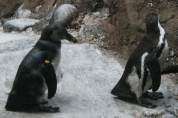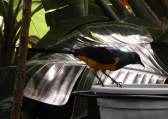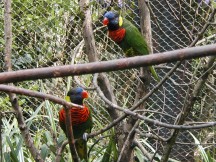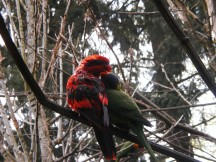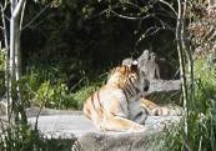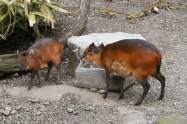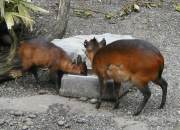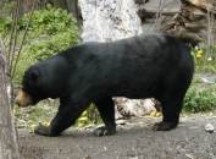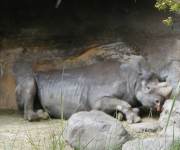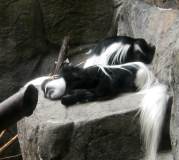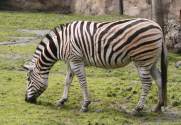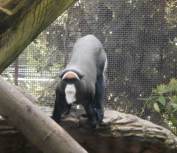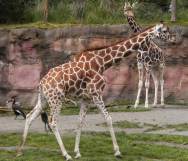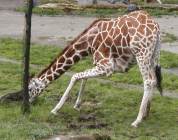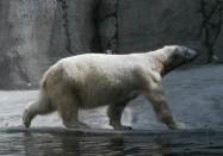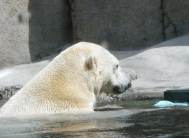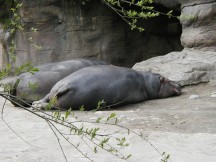|
Washington Park Zoo, Portland, Oregon About 1,029 specimens representing 200 species of birds, mammals, reptiles, amphibians and invertebrates. Of these, 21 species are endangered and 33 are threatened. The zoo is currently active in 21 Species Survival Plans. Photography by Rakin Khandoker Essentials on the natural world from Enchanted Learning.com |
||
|
Penguins are birds that swim very well and spend most of their lives in the sea. The Emperor Penguin lives in colonies on pack ice in Antarctica. It is kept warm in the harsh environment by a thick layer of blubber (fat) and by insulating down. |
|
Birds are warm-blooded
vertebrate animals that have wings, feathers, a beak |
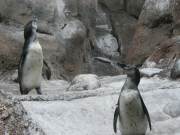 |
Birds have adapted
to their environment by flying, which makes them efficient hunters, lets
them escape from hungry predators (like cats), and takes them away from
harsh weather (migration). Birds sing beautiful and diversified songs. Songbirds have a vocal organ called the syrinx located in the throat. The muscular syrinx has two halves that each vibrate to produce songs, so the bird can sing two notes at a time. |
|
|
All penguins have a big head, a short, thick neck, a streamlined shape, a short, wedge-shaped tail, and tiny, flipper-like wings. Penguins have shiny, waterproof feathers that help keep their skin dry. They have more feathers than most other birds - about 70 feathers per square inch. Each year, penguins molt, losing their old feathers and growing new ones. |
|
Bird locomotion is quite varied; most can fly, some can run very well, some swim, and some do combinations of these. Birds have two relatively small lungs. These air sacs keep the lungs perpetually inflated (even when the bird is exhaling). Our lungs alternately fill and empty out. The bird's respiratory system takes up 20% of a bird's volume (our respiratory system takes up only 5% of our volume). |
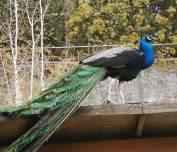 |
Not all flying animals are birds; and not all birds can fly. The ability to fly has developed independently many times throughout the history of the Earth. In order to fly, birds need a lot of oxygen, which they get by breathing air using lungs. They also need a strong circulatory system, including a powerful heart. A bird's heart beats much faster than our heart does. |
|
|
Peacocks are beautiful birds that are native to India and Sri Lanka. In the wild, they live in deciduous tropical rainforests. The peacock has a long, brilliantly-colored train of feathers that grow from its shimmering blue back. He can raise the train of feathers, forming a stunning display. |
|
The Bengal tiger is a large, striped cat from India, Bangladesh, Nepal, Bhutan, and Burma. Tigers are threatened with extinction due to loss of habitat. There are 5 surviving subspecies; 3 other subspecies have gone extinct in the last 70 years. There are estimated to be about 5,000 to 7,400 tigers left in the wild. |
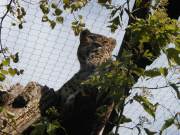 |
Snow Leopards are solitary wild cats that live in the snowy central mountains of Asia. They are in danger of extinction due to loss of habitat, loss of prey, and over-hunting; few Snow Leopards are left in the wild. Leopards are fast runners, good swimmers and excellent climbers. They often hide their food in trees. The leopard's call sounds like a raspy cough, not a roar. |
|
|
Reindeer are strong runners and very good swimmers. This deer is found in Arctic tundra, forests, and mountains in Russia, Northern China, Canada, Alaska, and Scandinavia. Some reindeer migrate in huge herds from the coastal Arctic to the tundra. |
|
Reindeer were domesticated in northern Eurasia roughly 2,000 years ago. Today, reindeer are herded by many European and Asian Arctic people. Reindeer have very wide hooves, a broad muzzle, and thick brown fur. The thick fur traps air, which insulates the reindeer from the cold and helps the reindeer float in water. |
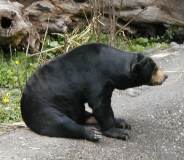 |
Black Bears are good swimmers and can also climb trees. They have a good sense of smell but have poor eyesight. They are afraid of Grizzly Bears and stay far away from them. Two to three cubs are born during the winter while the mother hibernates. Cubs stay with the mother for about one year. |
|
|
The White Rhinoceros is up to 6 1/2 feet tall at the shoulder and weighs roughly 5,000 pounds. It is a thick-skinned mammal that roams hot, grassy plains in Africa. Rhinos are perissodactyls, odd-toed ungulates (hoofed mammals), related to horses. The rhino is nocturnal, it is most active at night and during sunrise and sunset. During the hot African day, it lies in mud or dust. |
|
The only animals that can kill adult rhinos are people. Poachers sell rhino horns to use in folk medicine. Rhinos are in danger of extinction because of hunting and the loss of habitat. The nose horns are made from a hairlike substance that grows throughout the rhino's life. If the horn is broken off, it will grow back. The longest-known rhino horn was over 5 feet long! |
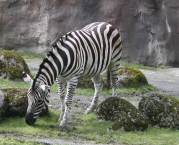 |
Zebras are large, fast-running mammals that live on African grassy plains (savannas). They can run up to 40 mph in short bursts in order to escape from predators (like lions and hyenas). Zebra fur has distinctive white stripes on a black background. No two zebras have the same pattern. These stripes may help to confuse predators chasing the zebra, making them misjudge distances. |
|
|
Zebras are very social animals and live in large, stable family groups which are led by females. They can run up to 40 mph (65 kph) in short bursts in order to escape from predators (like lions and hyenas). Stallions (males) watch the rear of the group in order to help protect them from predators. |
|
Monkeys eat leaves, fruit, seeds, nuts, grass, roots, eggs, insects, spiders, and small mammals. Adult monkeys range from about 2 to 4 feet long. Most also have a long tail - up to 3 feet long. They weigh from 4 ounces (the pygmy marmoset) to 100 pounds (the mandrill). |
|
|
The Ring-tailed Lemur is a noisy mammal that lives in Madagascar. The ring-tailed lemur spends most of the time on the ground but it is a good tree-climber (other lemurs spend most of their time in trees). Lemurs live in troops (groups of lemurs) in many environments, including: rain forests, scrub (areas with low trees and shrubs), and rocky areas. |
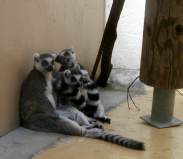 |
| The Asian Elephant (also known as the Indian Elephant) is a huge land animal that lives in India, Malaysia, Sumatra, and Sri Lanka. This elephant is used extensively for labor; very few are left in the wild. Their life span is up to 70 years. Elephants are excellent swimmers. They are in danger of extinction due to loss of habitat and poaching (they are killed for their ivory tusks). |
|
Giraffes can go for days without water. In order to drink water, the giraffe has to spread its front legs and bend its long neck to the water. This is a dangerous position for the giraffe since it can't see its enemies and can't get a fast start running. Unlike many animals, the giraffe's front legs are longer than the hind legs. These long front legs make it easier to reach tall leaves. |
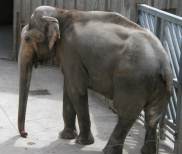 T T |
The giraffe is up to 19 feet tall and weighs up to 2,800 pounds. Even though the giraffe's neck is extremely long, it has only seven neck vertebrae, the same number that people and most other mammals have. The hind legs are shorter than the front legs. A tough hoof protects each foot. Males have knobbed, hairless horns, females have thinner, tufted horns. |
|
|
Polar Bears have thick, woolly fur close to the skin that keeps them warm. They also have hollow guard hairs that stick up and protect the bears from getting wet. These hairs are like drinking straws and are clear-colored (not white). The white-looking coat camouflages them well in the snow and ice. Under the fur, Polar Bears have black skin. |
|
Hippos are herbivores who spend most of the day resting in water. Hippos can stay underwater for up to 30 minutes. They are nocturnal (they are most active at night); they emerge from the water at night to eat grass. Bulls (adult males) often roar; they also fight each other, using their long canine teeth as weapons. |
|
|
Polar Bears are large, meat-eating bears who are well-adapted for life in their frozen Arctic environment. They are powerful swimmers who hunt seals in the water. Polar bears can run in bursts up to 25 mph. Females (called sows) build snow dens in which they give birth to twins. Male polar bears (called boars) do not hibernate. |
|
